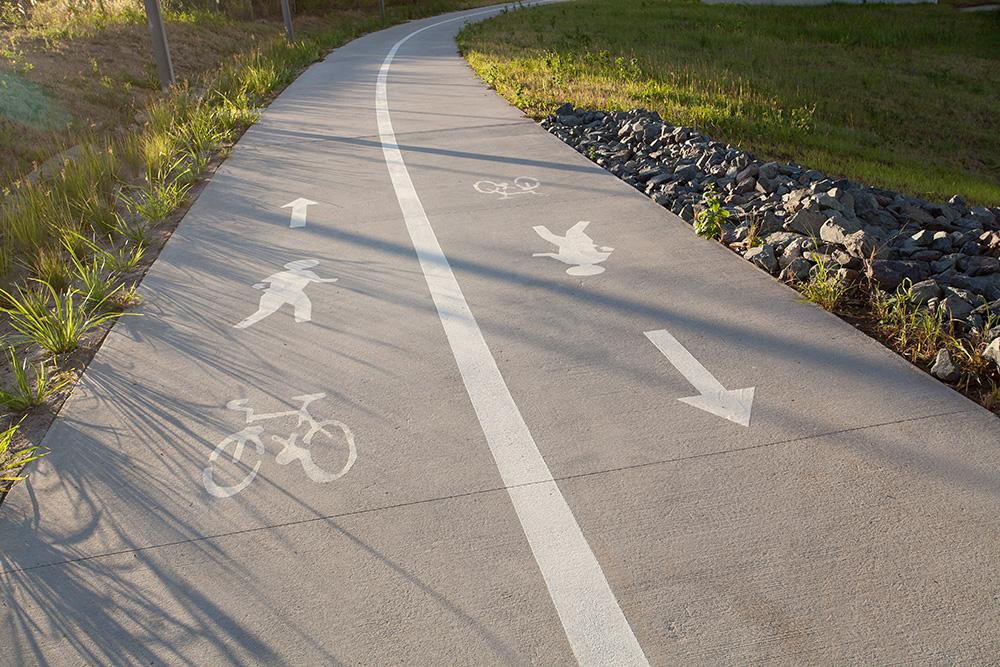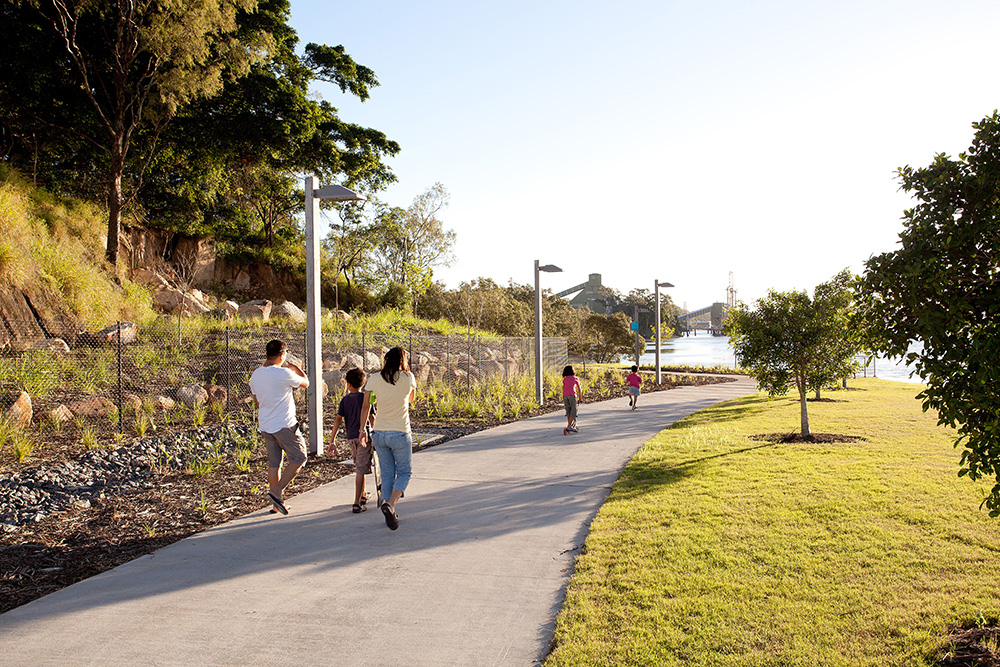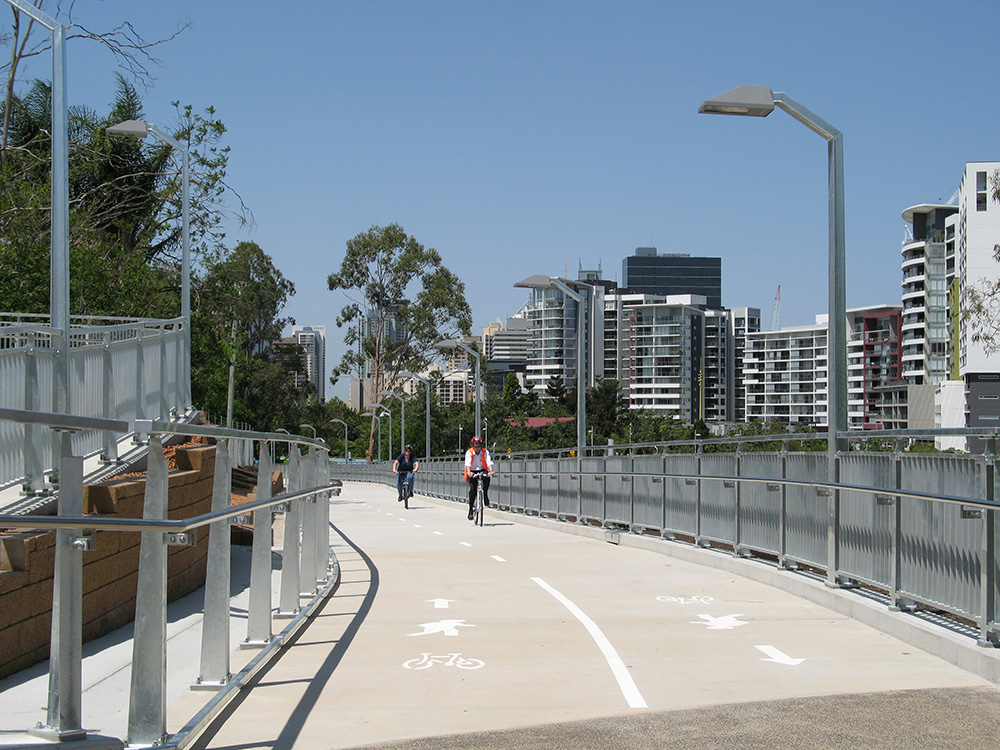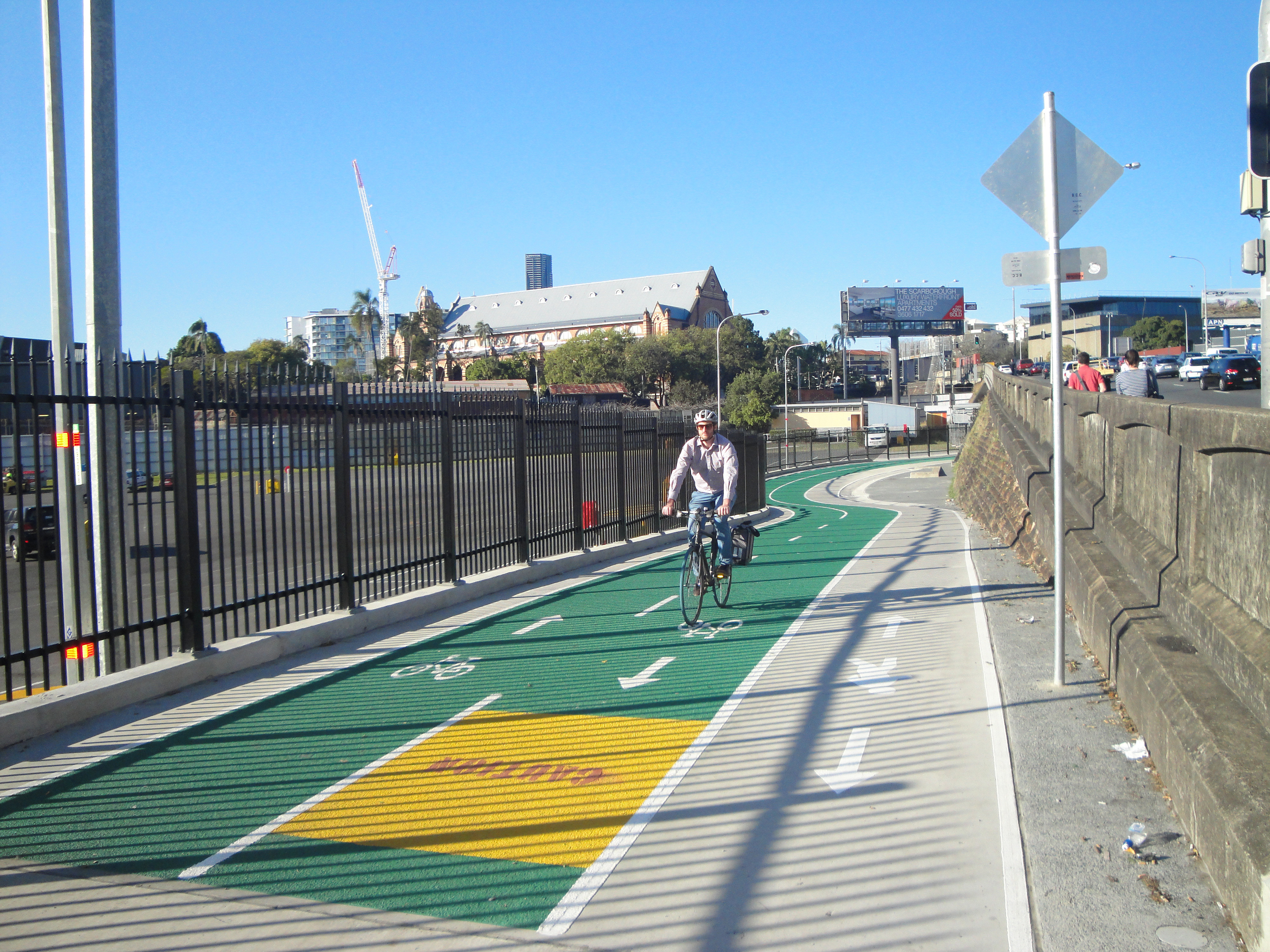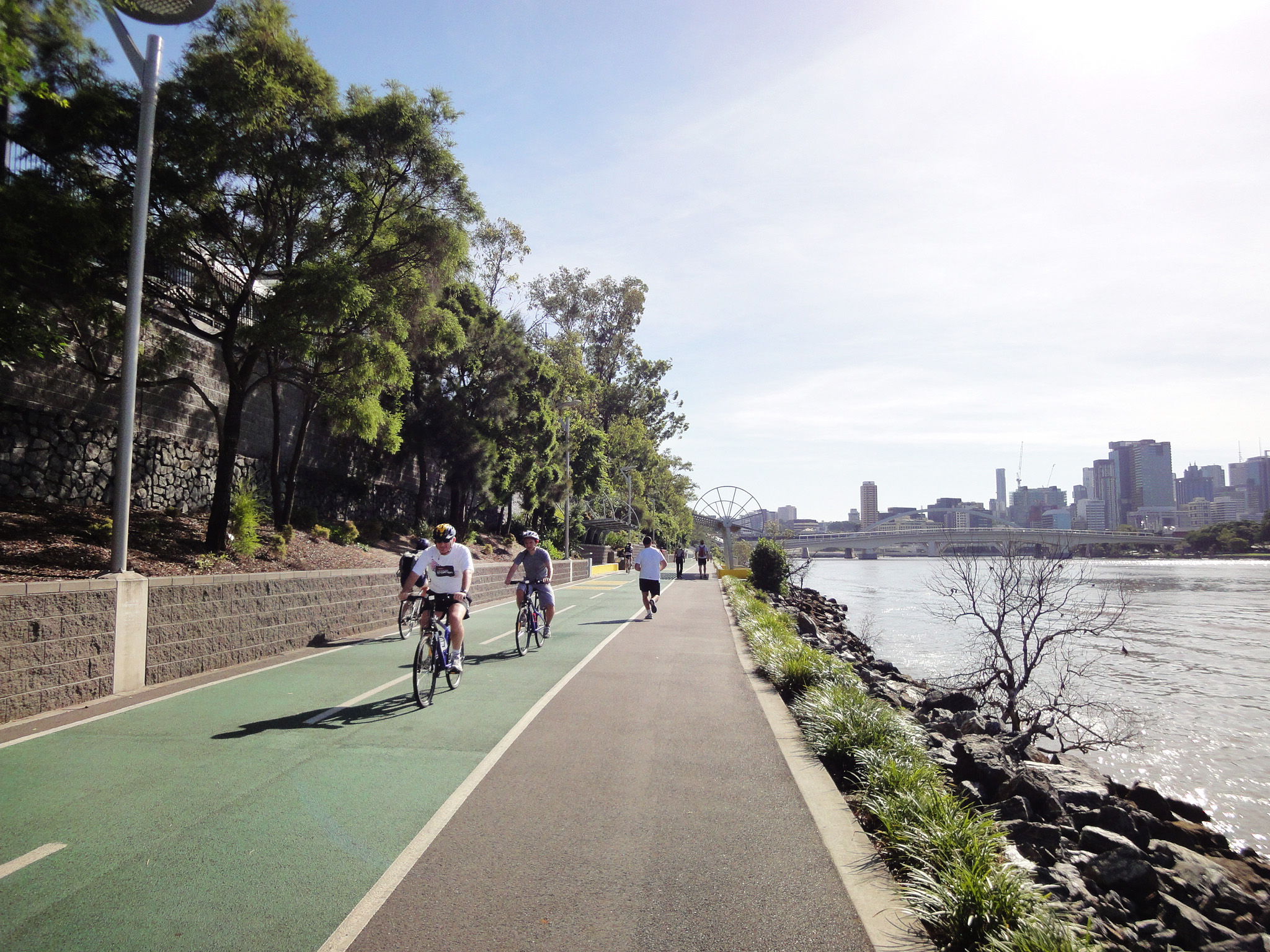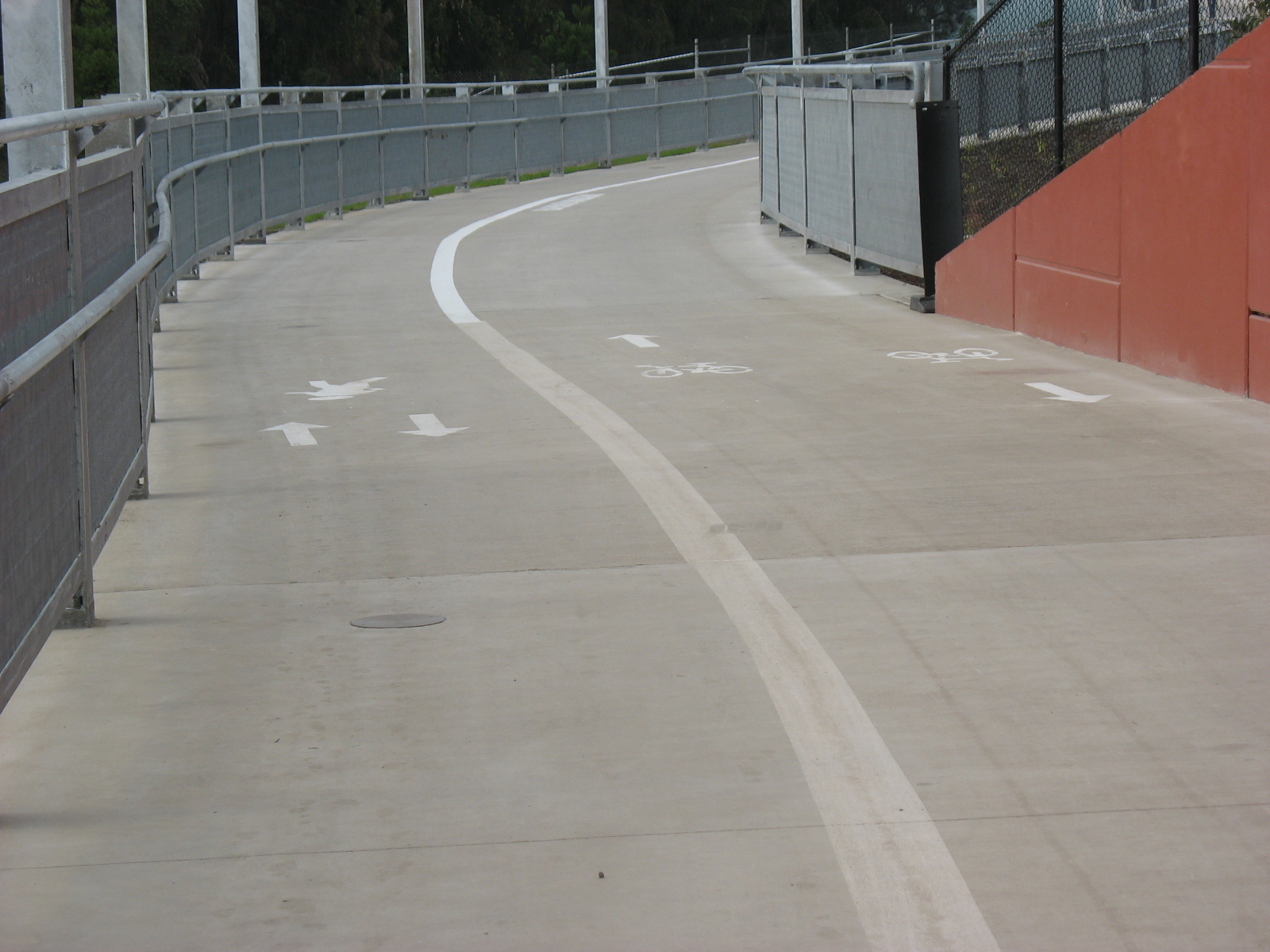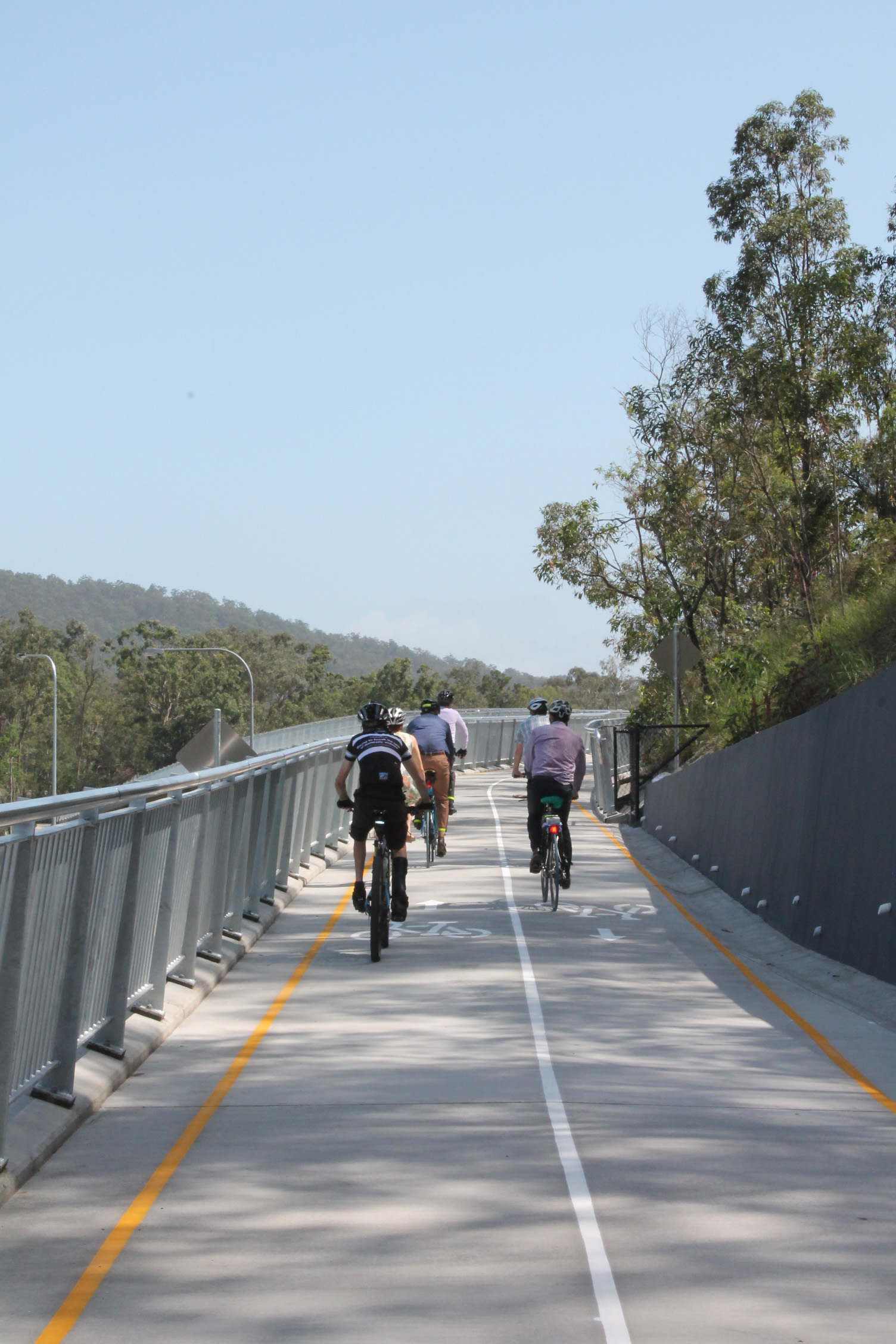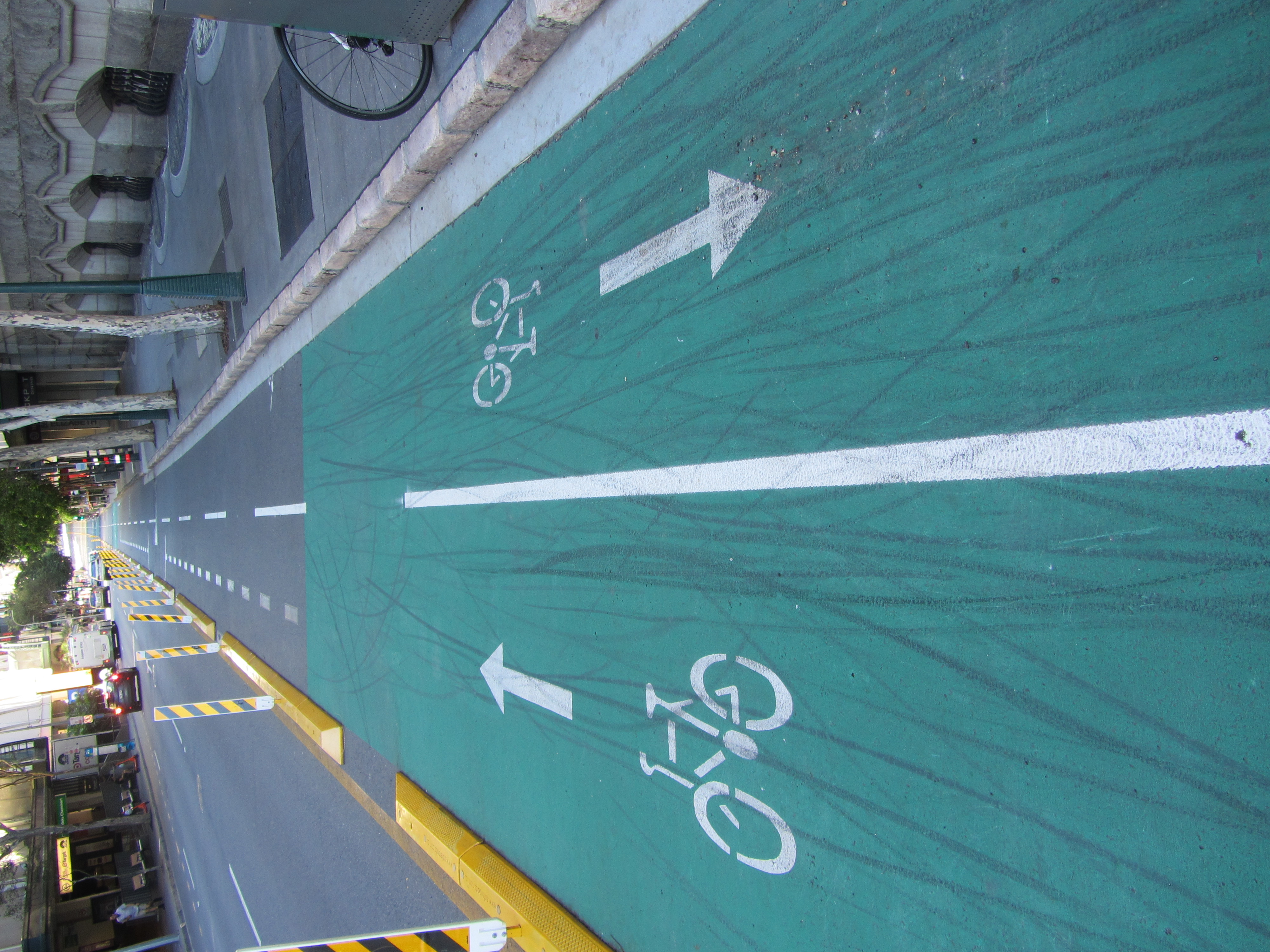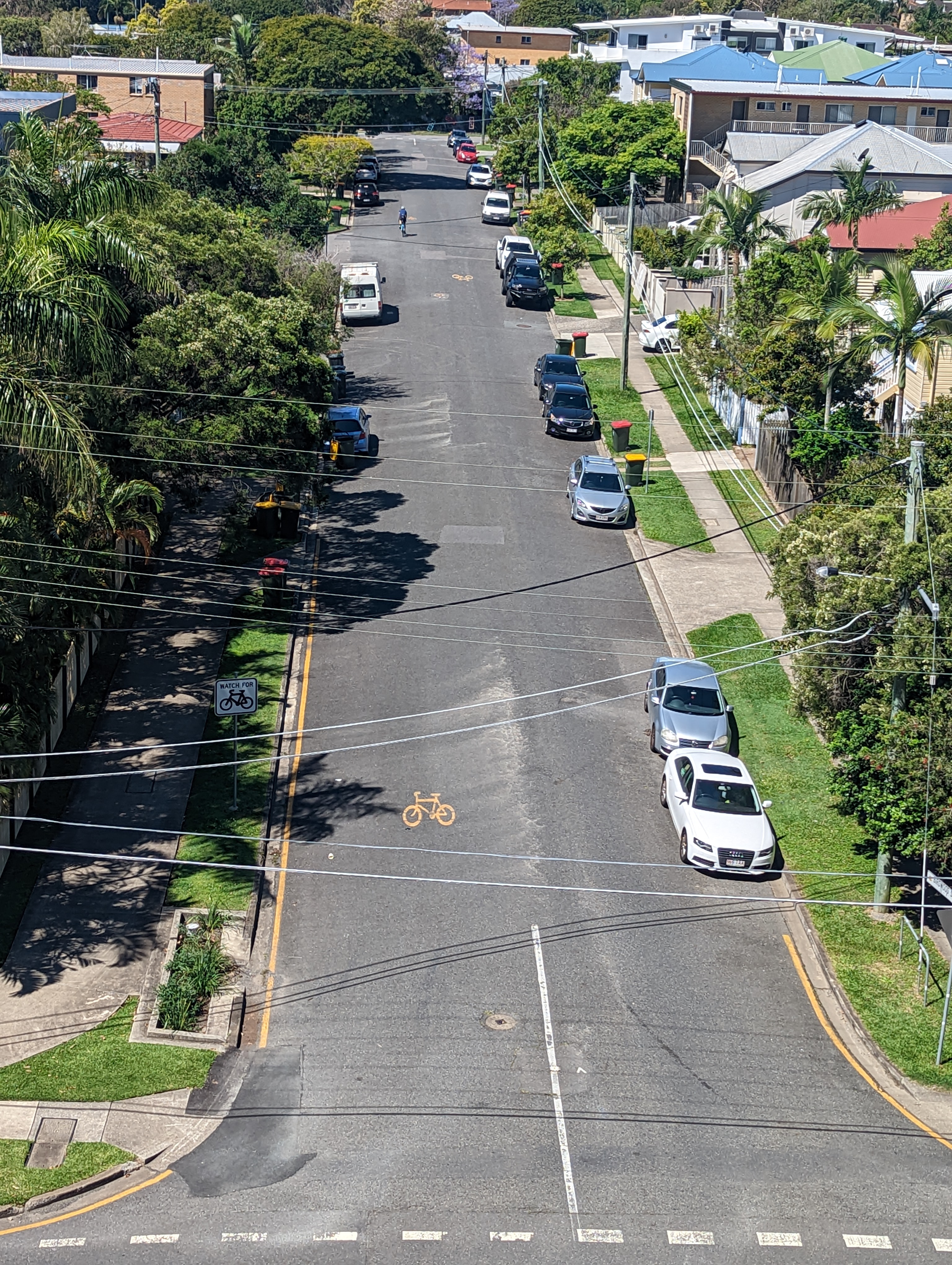Brisbane rules for electric scooters personal mobility devices
Rules for personal mobility devices
A broad range of personal mobility devices can be used in Queensland. You must comply with the rules for personal mobility devices and the general road rules as they are classified as a type of vehicle.
Children under 12 years of age must not ride personal mobility devices.
Remember, people of all abilities use our paths and not everyone can easily move around a device that might be blocking the path.
Personal mobility device riders who break the road rules will be given the same fines as motorists, but will not accumulate demerit points.
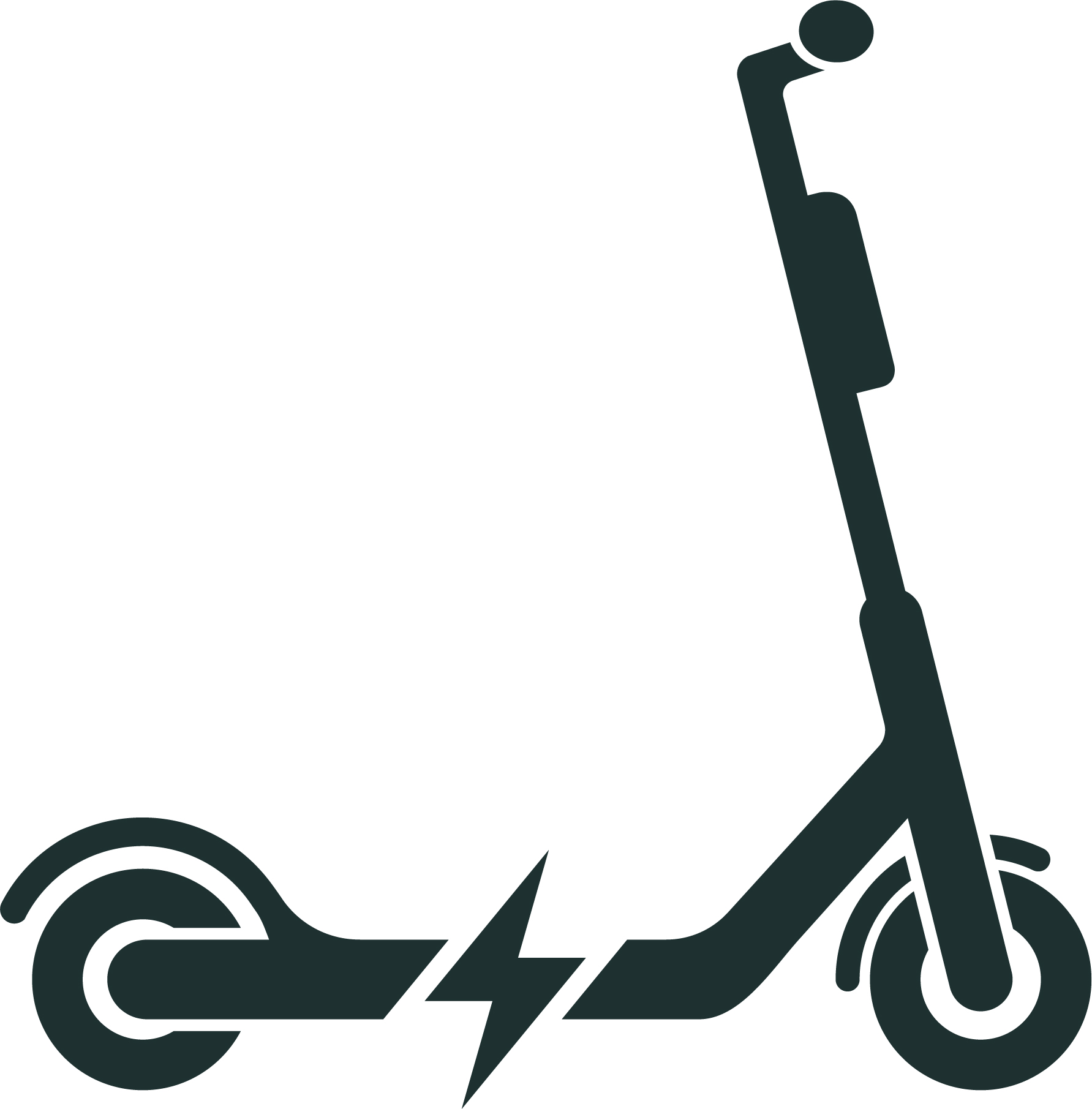
What is a personal mobility device
Personal mobility devices can include:
- e-scooters
- e-skateboards
- self-balancing single wheeled devices (like e-unicycles and e-boards).
In Queensland, a personal mobility device must:
- be designed for use by one person only
- fit the following dimensions:
- 1,250mm in length by 700mm in width by 1,350mm in height
or - 700mm in length by 1,250mm in width by 1,350mm in height
- 1,250mm in length by 700mm in width by 1,350mm in height
- have a maximum weight of 60kg—when not carrying a person or load
- be powered by an electric motor
- have one or more wheels.
Vehicles with pedals, (such as mobility scooters or motorised wheelchairs) (such as skateboards, roller skates and foot scooters) are not personal mobility devices.
Where you can ride
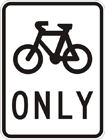
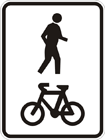 When you ride a personal mobility device, you must always:
When you ride a personal mobility device, you must always:
- keep left and give way to pedestrians
- travel at the right speed for where you are
- travel at a safe distance from a pedestrian so you can avoid a collision
- keep left of oncoming bicycles and other personal mobility devices.
Paths
- Footpaths — 12km/h maximum
- Shared paths —12km/h maximum (unless signed otherwise)
- Separated paths—25km/h maximum (unless signed otherwise)
- Bicycle paths — 25km/h maximum (unless signed otherwise)
Images from left to right: Pedestrians on a footpath, A shared path with pedestrian and bike rider signs painted on the ground, Shared path with cyclist, Shared path with bike riders riding, Separated bike path and pedestrian path, A separated path for bike riders and pedestrians by the river, Separated path, Bike path
Roads
- Bike lanes on roads with a speed limit of 50km/h or less
- 25km/h maximum
- obey speed limits lower than 25km/h
- Any bike lane that is physically separated from other lanes of traffic (for example by bollards or raised median strip)
- 25km/h maximum
- obey speed limits lower than 25km/h
- Local streets (50km/h or less and no dividing line)
- 25km/h maximum
- obey speed limits lower than 25km/h.
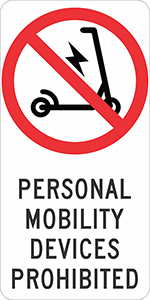
Prohibited areas
You must not ride past a 'personal mobility devices prohibited' sign. Your local council or land owners may prohibit personal mobility devices in areas like malls, esplanades or jetties.
You can contact your local to find out if there are any local laws that apply to the use of personal mobility devices.
Helmets
When you ride a personal mobility device, you must wear an Australian Standard (AS) approved bicycle helmet or an approved motorbike helmet. You must securely fit and fasten it. An approved bicycle helmet means a helmet that complies with AS 2063 or AS/NZS 2063. An approved motorbike helmet means a helmet that complies with AS1698 or AS/NZS1698, or the United Nations Economic Commission for Europe standard (ECE 22.05 or 22.06).
You do not need to wear a helmet if you have a doctor's certificate stating that, for a specific amount of time, you cannot wear a helmet:
- for medical reasons
- because of a physical characteristic that makes it unreasonable for you to wear one.
If you have a doctor's certificate, you must carry it with you when you ride without a helmet.
You also do not need to wear a helmet if you are a member of a religious group and are wearing a headdress customarily worn by your group, that makes it impractical to wear a helmet.
Riding and mobile phones
To keep yourself and other road users safe your full attention is needed when riding a personal mobility device.
Holding a mobile phone in your hand or resting it on any part of your body when riding is illegal. This includes tucking a phone into your clothing. The phone does not need to be turned on for it to be an offence.
Mounting your phone to the handlebars is allowed so that it can be used for GPS navigation or as a speedometer.
You can use a mobile phone in your hand when stationary on paths or nature strips.
Equipment
Every time you ride, your personal mobility device must have:
- an effective stopping system controlled by using brakes, gears or motor control
- a working bell, horn or a similar warning device (if the device has handlebars).
Your personal mobility device must not have sharp protrusions.
If you ride at night or in weather conditions that make it difficult to see, you must display (either on the personal mobility device or on you):
- a white light (flashing or steady) that can be clearly seen at least 200m from the front of the personal mobility device
- a red light (flashing or steady) that can be clearly seen at least 200m from the back of the personal mobility device
- a red reflector that can be clearly seen at least 50m from behind the personal mobility device when a vehicle's headlights shine on it.
Age restrictions
A person riding a personal mobility device must be either:
- at least 16 years
or - at least 12 years and supervised by an adult while riding the device.
Children under 12 years of age must not ride personal mobility devices.
Other rules
Carrying people
You must not carry another person when riding a personal mobility device. Not even children.
Signalling
If your personal mobility device is fitted with indicator lights, you must use them when you turn right.
Otherwise, you must use a hand signal when you turn right. To do this, extend your right arm out horizontally—at a right angle from the right side of the personal mobility device. Your hand should be open, with your palm facing forward.
If your personal mobility device is fitted with indicators, you must use them to give a left change of direction.
Keeping left and overtaking
When you ride, you must:
- ride as close as possible to the left side (or on the road shoulder) on a single lane road
- ride to the left of any oncoming vehicle
- not overtake another vehicle on the left if that vehicle is indicating and turning left
- not overtake another vehicle on the left if it is not safe
- not ride with more than 2 riders side by side unless you are overtaking another rider
- ride no more than 1.5m apart, if travelling beside another rider.
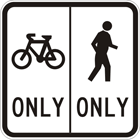 A separated path sign
A separated path sign
Riding on a separated path
On a separated path, you can only ride on the side that is for bicycle riders. The other side is for pedestrians.
The separated path sign will show you which side of the path you must ride on.
You must always ride to the left of bicycle and personal mobility device riders coming toward you.
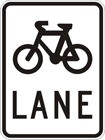 A bicycle lane sign
A bicycle lane sign
Riding in a bicycle lane on a road
You can choose to ride your personal mobility device in some bicycle lanes, including:
- bicycle lanes on roads with a speed limit of 50km/h
- bicycle lanes that are physically separated from other lanes of traffic (for example, by bollards or a raised median strip) regardless of the speed of the road.
You must not ride in a bicycle lane on the wrong side of the road (travelling towards oncoming traffic).
You can choose whether or not to ride in a bicycle lane.
Riding across a road at a crossing
You are allowed to stay on your personal mobility device to cross a road at a designated crossing, but you must:
- stop before riding across a marked crossing
- ride safely and slowly and give way to pedestrians
- obey the speed limit of 12km/h when on the crossing.
You can ride your personal mobility device diagonally across a scramble crossing.
You must give way to vehicles and other road users at uncontrolled intersections before you ride across.
Riding at bicycle crossing lights
When riding along the road and facing a red traffic light, do not ride past the red traffic light unless a green bicycle crossing light is also facing you.
When crossing the road at bicycle crossing lights, you must:
- stop before entering the crossing (if the light is red)
- only cross when the light is green
- if the lights change to yellow or red while you are still in the crossing, cross using the safest, most direct route
- obey the speed limit of 12km/h when on the crossing.
View larger image 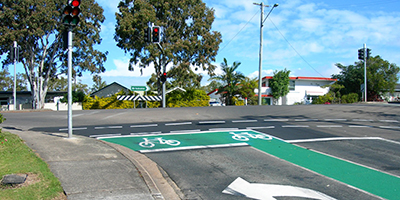 A bicycle storage area on a road
A bicycle storage area on a road
Riding to a bicycle storage area
A personal mobility device rider may choose to enter a bicycle storage area.
When you enter a bicycle storage area, you must:
- give way to anyone that is already in the bicycle storage area
- give way to any vehicle that is entering the area on a green or yellow traffic light.
Riding with a person in a personal mobility device trailer
You can tow a child in or on a personal mobility device trailer if:
- you are 16 years or older
- the child is under 10 years old and is wearing an approved helmet that is securely fitted and fastened
- the personal mobility device trailer can safely carry the child.
Parking a personal mobility device
You should park in designated e-mobility parking area, where available.
If there isn’t a designated parking area, park on the kerbside, ensuring your personal mobility device is upright and stable.
Don’t block paths:
- In built up areas, ensure there is sufficient space for a wheelchair to pass along the path.
- In suburban areas, park devices on grass nature strips and not paved footpaths.
Keep clear of:
- Crossings and kerb ramps
- Access points and emergency exits
- Tactile ground surface indicators
- Loading zones, taxi zones and bus stops
- Fire hydrants and mailboxes
It is important to do the right thing. Poor parking creates problems for other path users, particularly people with a disability.
Carrying a load
You can carry a load on your personal mobility device. If you choose to carry a load, you must:
- attach the load to your personal mobility device in a way that does not make the device unstable
- make sure the load is unlikely to fall from the personal mobility device.
Towing
You must not:
- ride a personal mobility device that is being towed by another vehicle
- hold on to a moving vehicle while riding a personal mobility device
- while riding a personal mobility device.
Riding too close to a vehicle
You must keep at least 2m between you and the back of a vehicle when you follow that vehicle for over 200m.
Being a traffic hazard
You must avoid being a traffic hazard – do not ride into the path of a driver or pedestrian.
Rules when hiring a personal mobility device
If you are using a hired personal mobility device you must leave your device in a safe and responsible way having regard for other path users.
Hire companies may have additional conditions of use in addition these rules.
Hire companies must consult their local council or authority prior to deployment.

